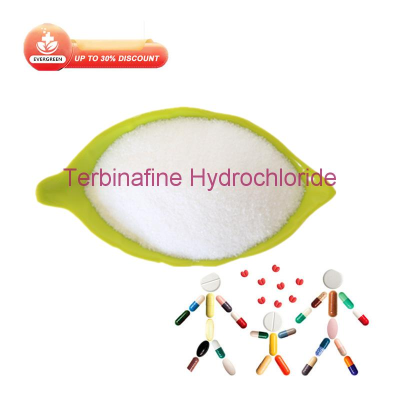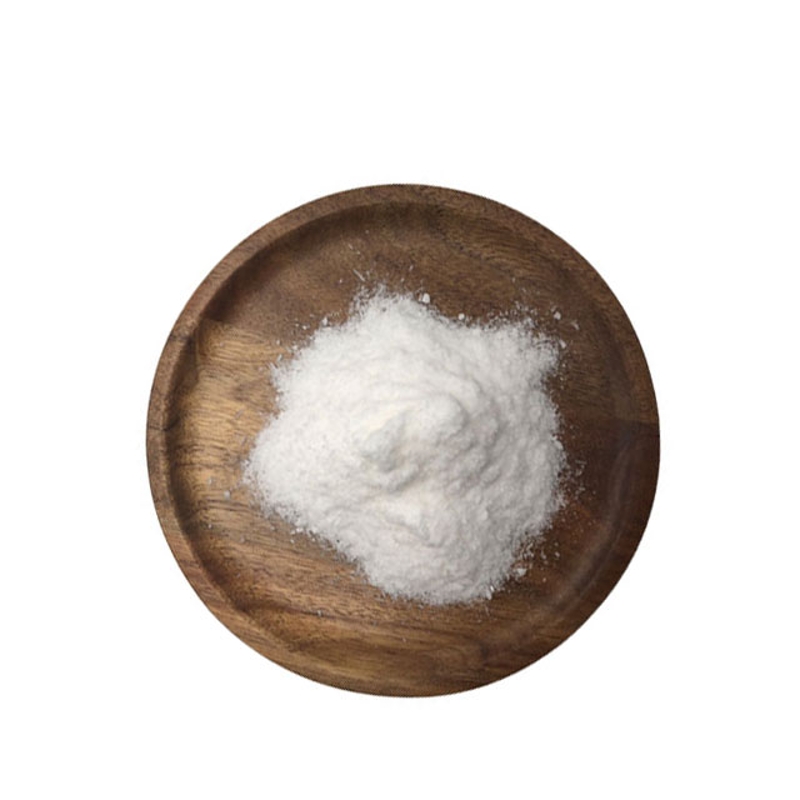-
Categories
-
Pharmaceutical Intermediates
-
Active Pharmaceutical Ingredients
-
Food Additives
- Industrial Coatings
- Agrochemicals
- Dyes and Pigments
- Surfactant
- Flavors and Fragrances
- Chemical Reagents
- Catalyst and Auxiliary
- Natural Products
- Inorganic Chemistry
-
Organic Chemistry
-
Biochemical Engineering
- Analytical Chemistry
- Cosmetic Ingredient
-
Pharmaceutical Intermediates
Promotion
ECHEMI Mall
Wholesale
Weekly Price
Exhibition
News
-
Trade Service
*It is only for medical professionals to read.
How to treat urinary tract infection? Urinary tract infection is not only Escherichia coli, but how to deal with this rare bacterium? Let's look at today's medication cases
.
1.
First understand the brief introduction of the medical history.
The case male, 44 years old, was admitted to the hospital on September 2, 2021 because of "onset arthritis pain for 20+ years, and then aggravated by half a month
.
"
Past history: type 2 diabetes, hypertension, coronary heart disease, lacunar infarction
.
Diagnosis 1.
Gouty arthritis in acute attack stage; 2.
Coronary heart disease ischemic cardiomyopathy with heart function grade III; Type 3.
2 diabetes; 4.
Primary hypertension grade 3 high-risk group
.
2.
Cephalosporins for urinary infections are not effective, and the drug sensitivity test gives indications for medication.
Symptomatic hypoglycemic, analgesic, uric acid, blood pressure and acid suppression treatments are given immediately after admission
.
On the 6th day, the patient complained of increased nocturia during the night yesterday, accompanied by tingling and burning sensation at the urethral opening when urinating, and complained that such a situation had occurred intermittently in the past 3 years
.
Consider urinary tract infections and be treated with cefotaxime
.
On the 7th day, the patient still had difficulty urinating, frequent urination at night, slight tingling sensation in the urethra orifice, and incomplete urination
.
Auxiliary examination: Color Doppler ultrasound of the urinary system (both kidneys, ureters, bladder, prostate, residual urine): No obvious abnormalities in urine salt crystals in both kidneys, bladder and prostate; no obvious residual urine
.
Laboratory examination: blood routine WBC9.
97×109/L, N%77.
6%; CRP13.
47mg/L; urine routine white blood cell 0/L, nitrite negative, white blood cell esterase negative
.
On the 9th day of admission to the hospital, the patient’s dysuria was slightly relieved.
He urinates 6 times last night, accompanied by a tingling sensation, burning sensation at the urethra orifice, and incomplete urination
.
On the 10th day, Acinetobacter bauman complex was detected in the mid-section urine (sent for examination on the 7th day of admission), and the results of the drug sensitivity test showed that the patient was resistant to imipenem and sensitive to amikacin
.
Replace with amikacin 0.
4g ivgtt qd treatment
.
Figure 1 The results of the bacterial test report on the 10th day of the patient's admission.
On the 13th day, the patient complained that the symptoms of frequent urination, urgency, and dysuria were significantly relieved, and the dysuria was relieved
.
On the 15th day, the patient complained of frequent urination again yesterday, about 1-2h/time, accompanied by slight dysuria, no pain during urination and burning sensation in the urethra
.
On the 18th day, the patient still had frequent urination, dysuria, no dysuria or burning sensation in the urethra
.
The mid-section urine (submitted for examination on the 14th day of admission) was found to be indole-producing Chryseobacterium indole, with a colony number of 4.
04E+04.
The drug susceptibility test showed drug resistance to imipenem and amikacin, and susceptibility to compound sulfamethoxazole
.
Laboratory examination showed: urine routine red blood cell 28/L, white blood cell 0/L, white blood cell esterase negative, nitrite negative; blood routine WBC14.
45×109/L, N%79.
2%; ESR 28mm/H; CRP40 .
33mg/L
.
Figure 2 The results of the bacterial test report on the 18th day of the patient’s admission invited a clinical pharmacist to consult on the treatment plan for urinary tract infection: The consultation opinion Chryseobacterium indoleogenicum is a metalloenzyme-producing non-fermenting gram-negative bacillus, which is naturally resistant to multiple antibacterial drugs.
It is widely present in the hospital environment and belongs to conditional pathogens
.
After using amikacin, the patient's painful urination was significantly relieved, but he still had frequent urination
.
Combining the patients with diabetes and long-term exposure to glucocorticoids, consider lower urinary tract infections caused by Chryseobacterium indoleogenicum infection
.
The patient has no contraindications such as fava bean disease.
It is recommended to give compound sinomin tablets 0.
96g po q12h and drink more water during the period
.
The course of treatment for recurrent lower urinary tract infections is 3-5 days after the symptoms are relieved
.
Adopted by the tube bed doctor
.
The first 19 patients taking cotrimoxazole tablets, skin rash, fever, joint pain, hematuria does not appear
.
On the 23rd day, the patient complained of no urinary tract irritation such as frequent urination or painful urination
.
Laboratory examination: blood routine WBC 10.
37×10^9/L, N% 83.
6%; urine routine is normal; CRP 25.
63×109/L; on the 27th day of admission, the patient complained of no urinary tract irritation such as frequent urination or painful urination
.
The mid-section urine (submitted for examination on the 22nd day of admission) culture showed that the bacteria produced indole, with the colony number 8.
0E+05
.
Figure 3 The results of the bacterial test report on the 27th day of the patient's admission.
On the 28th day, the laboratory blood routine examination was WBC 8.
61×109/L, N% 64.
1%, urine routine was normal, ESR 41mm/H, CRP 11.
26mg/L
.
Regarding the re-detected Chryseobacterium indoleogenicum, whether to continue to use compound sulfamethoxazole, the clinical pharmacist was invited again for consultation
.
According to the opinion of the pharmacist, the patient's condition was informed that after taking the compound sinomin tablets on September 20, to about September 23, frequent urination and dysuria had been significantly alleviated
.
Urine is clear and clear.
Ask at the bedside to see that the patient is in good spirits and communicates smoothly.
Consider the effect of anti-infective treatment for lower urinary tract infection
.
Urine culture still has Chryseobacterium indole-producing, but the patient currently has no urinary tract irritation.
Asymptomatic bacteriuria is considered, it is recommended to stop the oral administration of compound sinomin tablets, and continue the noble regimen for the rest of the treatment
.
On the 29th day, the patient's condition basically resolved and was discharged
.
Discharge diagnosis: acute attack of gouty arthritis; coronary heart disease ischemic cardiomyopathy type heart function grade III; type 2 diabetic diabetic retinopathy; primary hypertension grade 3 high-risk group; urinary tract infection: Bowman complex Acinetobacter, Chryseobacterium indoleogenicum; On the 14th day after discharge, the patient was followed up, and there was no lower urinary tract infection symptoms such as frequent urination or painful urination
.
Figure 4 Drug treatment plan during the patient's hospitalization 3.
Urinary infection, accept this medication guide ■ Choice of pathogens and therapeutic drugs In the chinet monitoring data of 2021, in the ranking of urinary tract specimen isolates, Acinetobacter baumannii test The out rate ranked 8th, accounting for 1.
92%
.
Acinetobacter baumann complex includes 6 species, namely: Acinetobacter calcoaceticus, Acinetobacter baumannii, Acinetobacter hospital, Acinetobacter peter, Acinetobacter seifert, and Acinetobacter dikshaw , The main pathogen is Acinetobacter baumannii
.
The treatment plan for Acinetobacter baumannii infection requires a combination of drug susceptibility test, site of infection, and drug pharmacokinetic characteristics [2].
The Acinetobacter baumannii complex detected in this patient is resistant to carbapenem antimicrobials.
Only sensitive to amikacin
.
Amikacin is stable to a variety of aminoglycoside inactivating enzymes, 90% is excreted through the urinary system, and the concentration in the urine is high.
The patient is not severely infected, so it can be used alone
.
Long-term use of amikacin can cause nephrotoxicity and neuromuscular toxicity, so the course of treatment should not exceed 14 days [5]
.
After the patient used amikacin 0.
4g/d, the symptoms of urinary urgency and dysuria were significantly relieved, but the frequent urination was still not relieved
.
Indole-producing Golden Bacillus is a rare non-fermenting gram-negative bacillus in clinical practice, mainly found in soil and water
.
Due to the presence of metal β-lactamase, it has natural resistance to aminoglycosides, β-lactams, tetracyclines, and chloramphenicol, but it is resistant to rifampicin, erythromycin, clindamycin and compound sinobacteria Ming is sensitive [3]
.
Compound trimethoprim is a compound preparation of sulfamethoxazole (SMZ) + trimethoprim (TMP).
Its mechanism of action is to inhibit the effects of bacterial dihydrofolate synthase and dihydrofolate reductase, and prevent bacterial folate metabolism
.
After oral administration, the gastrointestinal tract is completely absorbed, mainly through glomerular filtration and renal tubular secretion.
The urine drug concentration is significantly higher than the blood drug concentration.
Therefore, patients with renal insufficiency should use it with caution, and drink plenty of water during the administration to maintain a high urine flow.
.
The adverse reactions of compound sulfamethoxazole tablets are more common in skin rashes, etc.
, and can also cause hemolysis in patients with G6PD deficiency [6]
.
After taking the medicine for 3 days, the patient's frequent urination was significantly relieved, and there was no recurrence after discharge
.
The effect of drug treatment may be considered .
■ Urinary tract infection treatment course Urinary tract infection is divided into upper urinary tract infection (pyelonephritis, ureteritis) and lower urinary tract infection (cystitis, urethritis) according to the site of infection
.
The course of treatment for upper urinary tract infection is 10-14 days, or continue medication for 3-5 days after the symptoms are controlled; for lower urinary tract infection, it is generally recommended to take 3 days, which is basically less than 7 days
.
For recurrent lower urinary tract infections, it is also recommended to take a short course of treatment during the acute stage.
If the symptoms are not obvious for 2-3 days of treatment, the course of treatment can be appropriately extended [1]
.
■Other asymptomatic bacteriuria, non-pregnant women and patients undergoing urinary tract surgery, antimicrobial treatment is usually not recommended [1]
.
References: [1] Chinese Expert Consensus Compilation Group on Diagnosis and Treatment of Urinary Tract Infection.
Chinese Expert Consensus on Diagnosis and Treatment of Urinary Tract Infection (2015 Edition)-Complex Urinary Tract Infection[J].
Chinese Journal of Urology, 2015, 36 (004):241-244.
[2] Chen Baiyi, He Lixian, Hu Bijie, et al.
Expert consensus on diagnosis, treatment, prevention and control of Acinetobacter baumannii infection in China[J].
Chinese Medical Science, 2012.
[3] Huang Shaojun, Han Wen Ya, Cheng Congcong, et al.
Clinical characteristics and drug resistance analysis of Chryseobacterium indoleogenicum[J].
Chinese Journal of Health Laboratory Sciences, 2019, v.
29(18):40-42.
[4]Lin Hongli, Xie Hua, Jian Guihua,He Yani,Chen Xiangmei.
Expert consensus on diagnosis and treatment of female urinary tract infections in China[J].
Chinese Medical Journal,2017,97(36):2827-2832.
[5]Amikacin Injection Drug Instructions[6] Compound Sulfamethoxazole Tablets Drug Instructions







